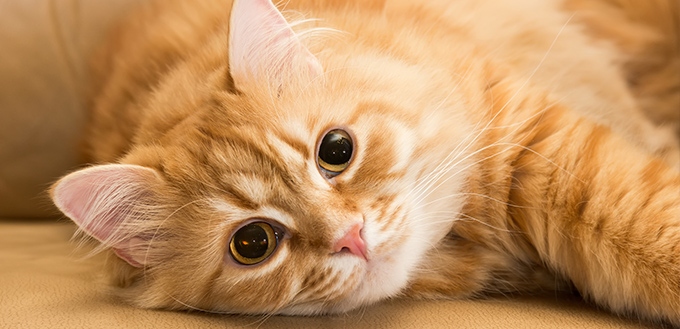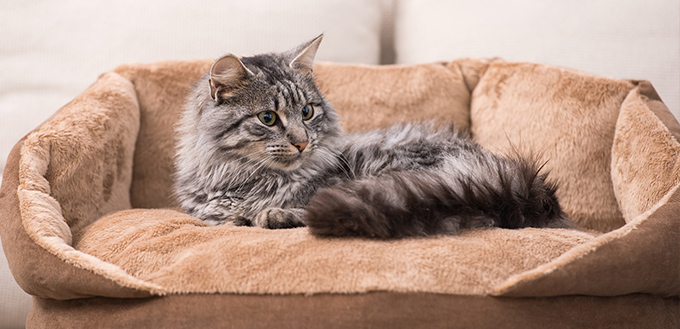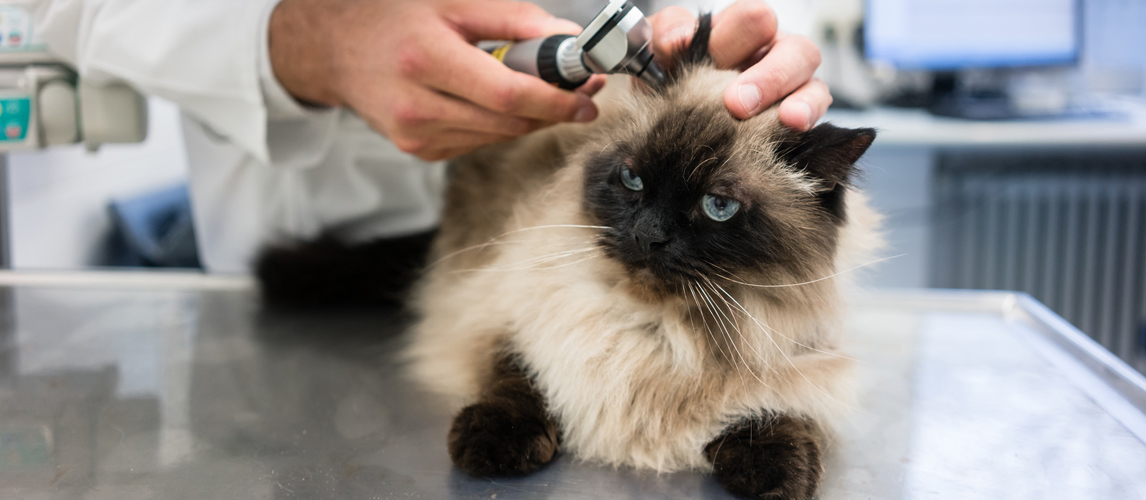We’ve all absentmindedly sat in front of the TV stroking our cats. But have you ever touched their ears and wondered why they felt so hot or cold? What if your cat has one hot ear and the other is cold? Does this automatically mean something is wrong? I’ve definitely wondered why my cat’s ears are cold. It is easy to freak out about your pet’s health when you notice something you have never noticed before, but don’t worry, most of the time it is perfectly normal for your cat to have hot ears.

Your Cat’s Temperature
A cat’s natural body temperature ranges from 100.4 to 102.5 degrees. This is much warmer than a human’s. If you are only mildly shocked at how warm your cat feels, then their higher average body temperature might explain it away.
But, what about their ears specifically? Like our own ears, a cat’s ears might not be the same temperature as the rest of their body. This is because ears are so unprotected. There is less body fat and, in the case of cats, there is less fur. Noses are similar. Most of the time, however, we expect this to make the ears a particularly cold part of the body, but this is not always the case.
The environment that your cat is in will influence the temperature of their ears. A cold environment means a reduction in blood flow in the ear in an attempt to retain heat, which makes it colder, but warm weather will do the opposite. If your cat has unexpectedly hot ears, ask yourself: Is it a hot day? Have they been lounging in front of the heater? If so, it may be that your cat’s body is simply using their ears to cool themselves down by increasing the blood flow in the hopes that the exposed area will cool the blood faster that their fat, furry, little bellies.
This could also explain the phenomenon of having a cat with one hot ear and one cold ear. They may have simply been lying with a heater to the left of them and a cold window on their right, or vice versa. Then one ear would have tried to cool the cat’s blood flow, while the other ear was trying to warm it up!
Signs of a Fever
Sometimes, however, your cat’s ears aren’t just warm. They are hot. Fevers in cats are temperatures above 102.5 degrees, and must be comprised of their whole body. If your cat’s ears feel very hot, check their stomachs and underarms. If they feel similarly hot, you might have a sick kitty. You can confirm it is a fever by looking for these additional symptoms:
- Isolating themselves
- Rapid breathing
- Decreased grooming
- Decreased drinking,
- Stretching out of body
- Seeking a cool location
- Loss of appetite
You can also check their temperature. Use a digital pediatric rectal thermometer as it is the more accurate and safe than glass thermometers. When checking their temperature, use lubricant, reward them with a cat treat, and clean the thermometer with alcohol. You will also need to be prepared to safely restrain your cat. Consider asking someone to help you. Do not force the thermometer, but insert it slowly and gently move it around to help loose their sphincters. Stop when you are about one inch into your cat’s rectum.
Don’t worry too much if you do confirm that it is a fever. Fevers are a natural reaction when an animal’s body is fighting a virus and it may just do the trick on its own. Sometimes, you just have to let your cat’s body to its job. It is a good idea to check for wounds or swellings to help rule out a bacterial infection.
If the fever is above 106 degrees, or if it doesn’t start improving in a day or two, it is advisable that you seek help from a veterinarian. Fevers above this temperature can cause damage to organs, and lengthy fevers can be a sign that your cat is fighting something worse than a virus.

Other Causes of Fevers
To be safe, you should keep an eye out for other symptoms if your cat has even a mild fever. A mild virus on its own may be manageable, but further symptoms might be a sign of something worse. Consider taking your cat to the vet if they are suffering from:
- A decrease in appetite
- Shivering
- Discharge from wounds or the eyes
- Sneezing
- Bumps or lesions
- Any other unexpected health concerns or changes in behavior
Your cat might suffer from a condition unimaginatively called a ‘Fever of Unknown Origin’ (FUO). This is a fever that disappears and comes back several times over approximately two weeks. This will require some detective work from your vet, so help them by writing down observations about the fever. When did it start and end? What was your cat doing? Had you visited anywhere new?
Ear Problems
Cats can have ear problems just like humans, but the good news is that it is unlikely that hot ears is the only symptom. Most often, ear infections in cats occur due to a buildup of wax which traps ear mites or fungi, and encourages growth. If you are worried that your cat’s hot ears are a symptom of an infection, look out for these further symptoms:
- Rubbing or scratching at their ears, either with their paws or against furniture
- Dark colored discharge
- A bad smell
Most of All: Don’t Panic!
It is very unlikely that your cat’s hot ears are a problem if there are no other changes in their health or behavior, even if they have a mild fever. Mostly, hot ears are a sign of their immediate environment, which changes a lot. Since I first observed that their ears seem to have a climate of their own, I’ve started noticing that it can change hour to hour. One second my cat’s ears are cold, and the next they feel hot again! If you spot several symptoms, there is more to be concerned about. For example, if your cat has hot ears and vomiting, they may be genuinely ill and you should take them to a vet.
Related Post: Best Cat Ear Cleaners
Source:
- Dr. H. Ellen Whiteley, How to Tell if Your Cat Is Sick, HowStuffWorks








Fever in ears during winter with lumps appearing on their body. Most of the time around their neck. But on the back and base of tail also. Runny nose. Eyes seem swollen. Fur falling out in winter. Sparse fur.